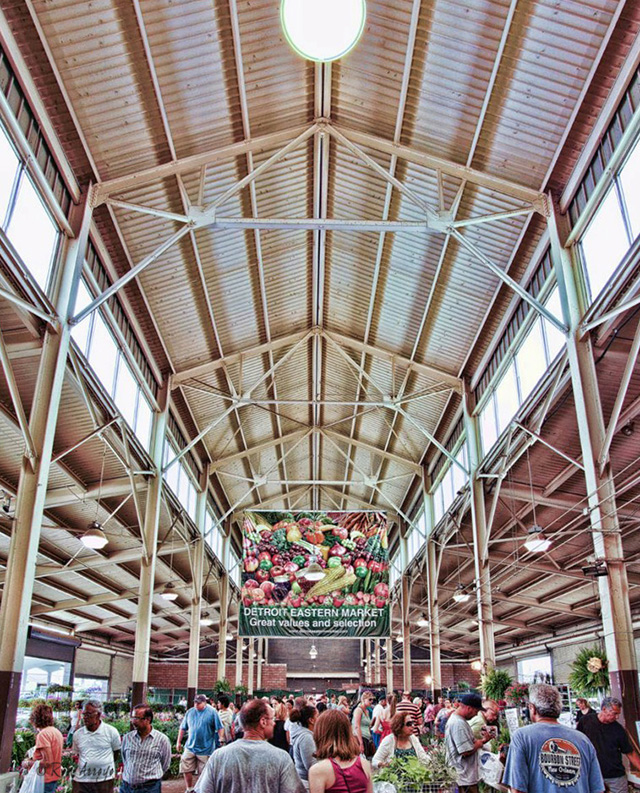
How a new strategy will guide Detroit’s Eastern Market into its next 125 years

All images courtesy of Eastern Market Corp.
Dan Carmody is president of Detroit’s Eastern Market Corp.
With Knight Foundation support, Eastern Market has released a new strategy to guide future development of one of America’s largest and most iconic public markets and food districts.
“Eastern Market 2025” provides a road map to guide the market and its adjacent food district into a new era in which the resurgence of Detroit and the booming growth of the local food economy provide nearly unlimited growth opportunities.
Without careful guidance these strong drivers could destroy the market’s authenticity as defined by its character as a place where food products are made and distributed, and by its profound sense of development equity in which everyone, across lines of income, generation and race, are welcomed to participate.
Given the rising tide of real estate investment in Detroit and implementation of the Food Safety Modernization Act, which discourages use of older buildings for food uses, Eastern Market is poised to travel the well-worn path of market districts in other cities. Manhattan’s Meatpacking District and Chicago’s Fulton Market area provide ample evidence that food distribution and processing operations disappear as bars, boutiques and lofts invade food districts.
Unlike its peers however, Eastern Market has a unique opportunity to attract and retain food business by expanding on the north and east edges of the current district into areas that have high vacancy rates.
If the Eastern Market District does not expand, growing food companies will eventually move out of the current district and will do as their compatriots in other cities have done – disperse throughout the metropolitan region and the city will lose 1,500 to 2,000 jobs.

While other uses can outbid food users for vacant land, the strategic importance of a robust food economy is beginning to emerge. Long taken for granted, the food sector is gaining increased recognition for its role in developing a healthy regional economy.
The food sector helped drive Brooklyn’s renaissance and has become its strongest job creator. Food-sector employers need the widest spectrum of skill sets of any major sector of the economy; they hire the highest percentage of entry-level workers, and with living wages these low- and semi-skilled jobs become critical in reducing high unemployment rates in Detroit neighborhoods.
While securing adjacent areas to retain and grow its working food district character, Eastern Market can simultaneously work to densify and diversify the current market by backfilling food retail, residential and general retail uses in ways that fulfill Eastern Market’s role as a place that welcomes all Detroiters.
Since the food sector has the widest range of job skills, Eastern Market plans to build housing that mirrors that diversity. Mixed-income housing with 3:2 ratios of market-rate to affordable units are envisioned so that everyone can enjoy the benefits of walking to work, including better health derived from greater incidental physical activity and the increased wealth stemming from reduced household auto ownership levels.
With commercial rents expected to skyrocket, Eastern Market plans to hold 20 to 30 percent of new commercial rental space at below-market prices to support legacy businesses, especially those owned by people of color who have contributed to the market’s success, and to support the tenancy of convenience retail and services that improve the quality of life for low- and moderate-income households living in nearby neighborhoods.
Expanding the Eastern Market District to enhance its working food district character while carefully intervening in the market core to enhance development equity is how Eastern Market intends to become a more powerful engine for Detroit’s economy.
This year Eastern Market celebrates its 125th birthday. Successful implementation of “Eastern Market 2025” ensures that Eastern Market will still be nourishing Detroit 125 years from now.
Download the PDF of the plan here.
Follow Dan Carmody on Twitter @dancarmody.

Recent Content
-
Communitiesarticle ·
-
Communitiesarticle ·
-
Communitiesarticle ·


